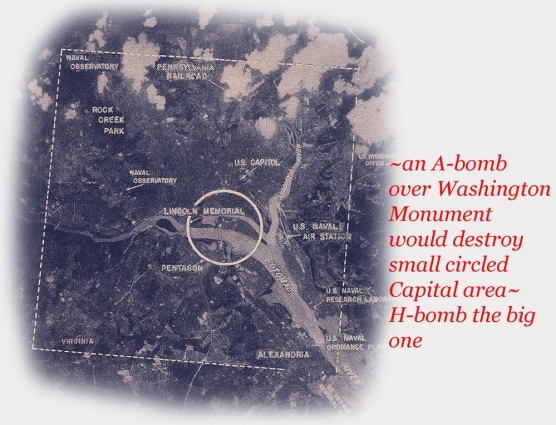Within a nine-month period beginning on September 23, 1949, the Cold War began to get really hot, really fast, which made many people around the world increasingly nervous. First came the the successful Soviet acquisition of an Atomic-bomb, which compelled the Truman's Brain-Trust in Washington to announce five months later that they were commencing work on even bigger bombs; four months later, Stalin decides that he will not be out done - and orders the North Korean Army to attack across the 38th parallel - and the shooting began. This article is about the second step in this process: the United States development of the Hydrogen bomb.
"A hydrogen bomb could cause damage almost without limit. The Nagasaki plutonium bomb affected an area of 10 square miles. The new weapon could destroy an area of 100, or 1,000 square miles. Loss of life can be figured on the same sliding scale. At Hiroshima, more than 78,000 persons were killed. Death from an H-bomb would multiply that by ten or, more horribly, 100. There is no known technical reason why such a bomb could not, fairly easily, destroy all of New York City. The bigger a hydrogen bomb is, the more efficiently it explodes".
